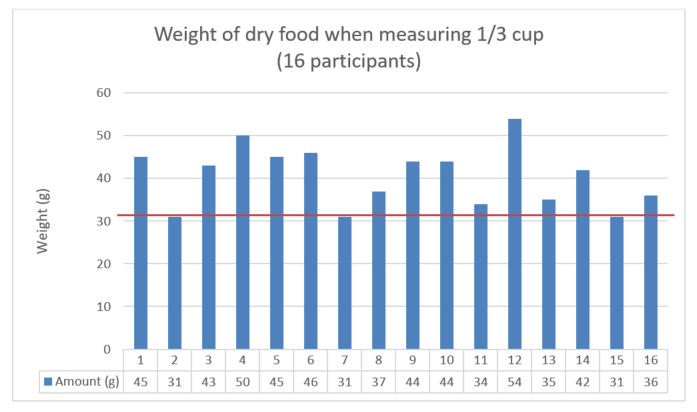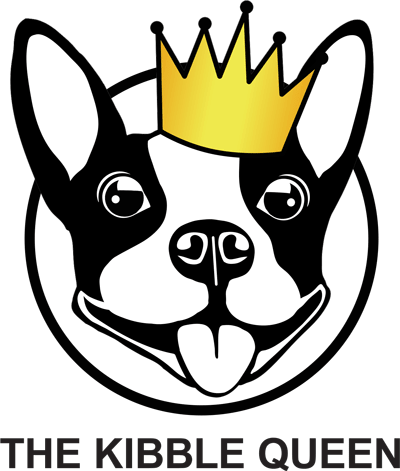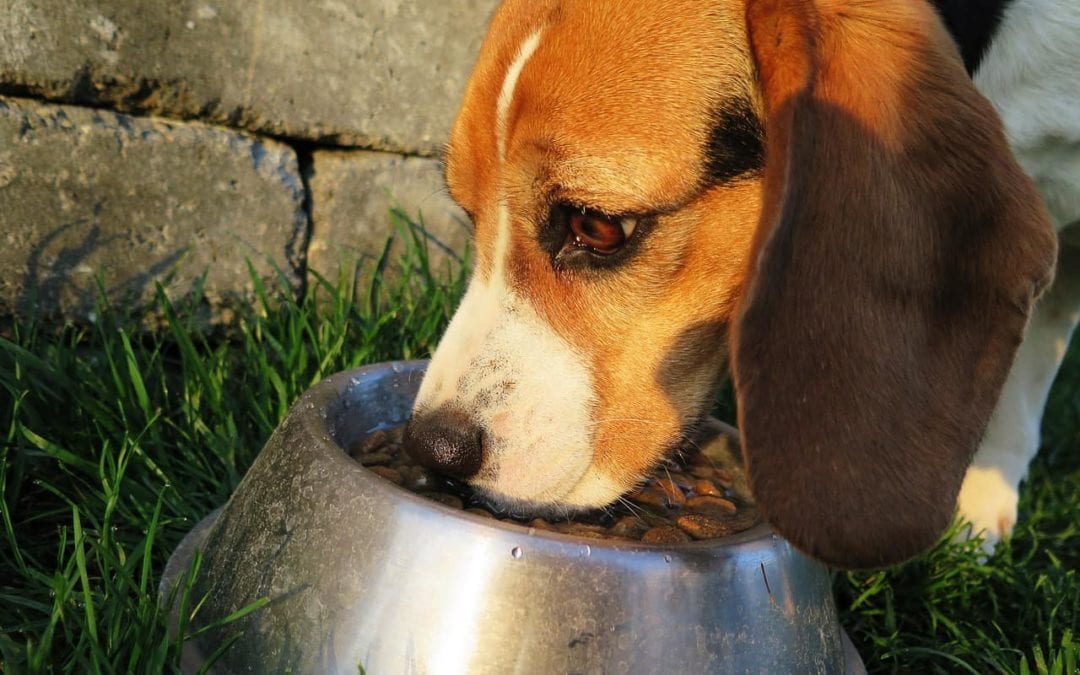The downside to measuring cups! #BanTheCup
If you are a veterinary team member, you’re probably thinking, why on earth would I want to discourage pet parents from using measuring cups? Especially when there are so many pet parents that use far worse things to measure their pet’s food. We’ve all had clients that use old yogurt containers, old coffee cups, even the pet’s bowl or their own hands to measure food! There are even some pet parents that free feed. It’s like an all-you-can-eat buffet that never closes . . . and it gives a nutritionist (i.e. me) nightmares!
So how bad can measuring cups really be?
Dr. Alex German (@TheFatVet), a board-certified small animal internal medicine specialist, and colleagues, conducted a number of studies using measuring cups and published the results in 2010 (click here for a link to the article). They found measuring cups were incredibly inaccurate! Accuracy ranged from an 18% under-estimate to an 80% over-estimate in portion size! Yes, over-estimated by up to 80%!!! One more time! Over-estimated by up to 80%!!!
Imagine you ask a pet parent to carefully measure out 1/3 of a cup of food for their healthy adult cat daily. Depending on how the kibble falls in the cup, or the measuring cup being used, this could result in feeding almost double the number of calories their cat needs (unintentionally)! And we will wonder why this cat weighs more and more at every annual examination, even when the client insists they are measuring the food and not giving more than 3-4 treats daily (and each treat is 1.5 kcal each). In reality, we have been setting the cat and the pet parent up for failure (again unintentionally). We have asked them to measure an accurate dose of food and then given them an inaccurate tool.
I recently had a group of 16 veterinary team members try to accurately measure 1/3 of a cup of a specific veterinary therapeutic diet. Now these veterinary team members were competing for all the glory that comes with winning a competition (and their very own gram scale . . . very high stakes!), so they were taking extra care to be sure they were accurate. I suspect they were being far more careful than an average pet parent measuring their pet’s food for breakfast before they have had their morning coffee fix. Take a look at the results!

The amounts measured using the same gram scale varied from 31 grams to 54 grams! The scarier part of this little demonstration was the fact that 1/3 of a cup of the diet we were using should have been 31 grams! Only three of the 16 participants got 31 grams! The other 13 participants (all above the red line on the graph above) would have unintentionally overfed their pets. That means that unintentionally 80% of the veterinary team members would have fed their pet’s too many calories. If this occurs every day, over the course of a year, it is easy to see how a pet can become overweight, even when using a measuring cup.
So what’s the solution? Gram scales!
This may seem daunting to some pet parents at first, but the key is to demonstrate how to use a gram scale. This is something a technician or front desk staff member with an interest in nutrition can make their own! You can set up a little station for demonstrations with different measuring cups, dry pet food, a gram scale, and a bowl. If you get really into it, you could have pet parents record the number of grams for 1/3 cup, 1/2 cup, and 1 cup to show them how inaccurate measuring cups are.
Until next time! Keep it balanced and keep if factual! #BanTheCup
Sincerely,
The Kibble Queen
Dr. Jackie Parr, BScH, DVM, MSc, Dip ACVN
© Dr. Jackie Parr, BScH, DVM, MSc, Dip ACVN and www.kibblequeen.com, 2017. Unauthorized use and/or duplication of this material without express and written permission from this site’s author and/or owner is strictly prohibited. Excerpts and links may be used, provided that full and clear credit is given to Dr. Jackie Parr, BScH, DVM, MSc, Dip ACVN and www.kibblequeen.com with appropriate and specific direction to the original content.

